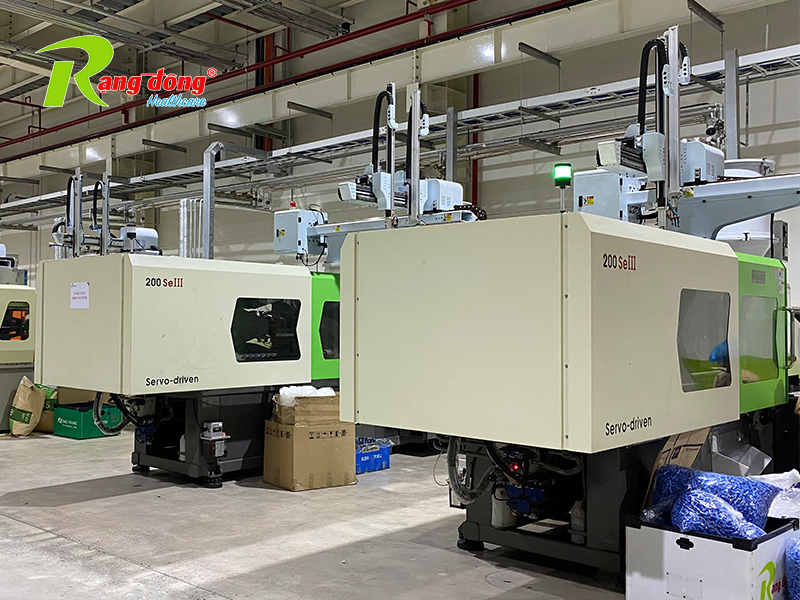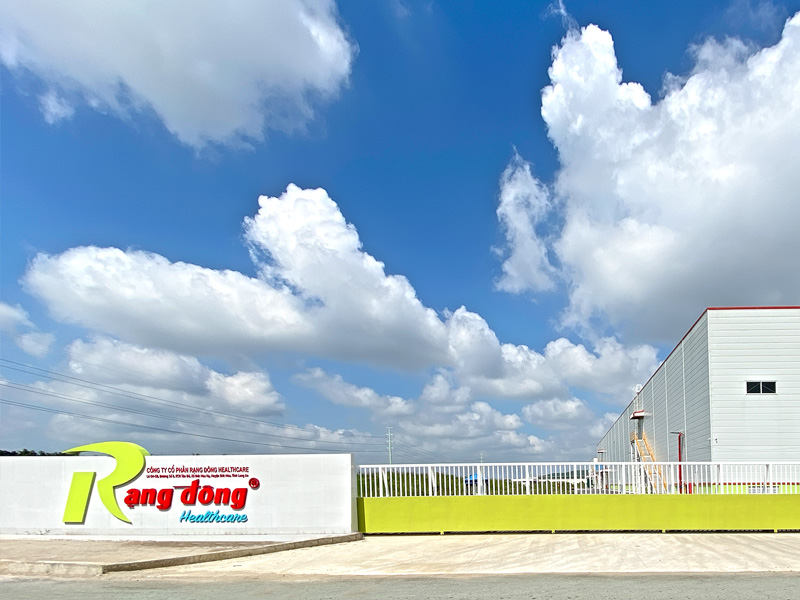Guide to Selecting the Best Materials for Injection Molding Process Product information 13/09/2023
In the context of the healthcare industry, healthcare services in Vietnam and worldwide are continually improving. As a result, the market for healthcare products is expanding, leading to significant changes. To meet this demand and foster competition among suppliers, Rang Dong Healthcare Joint Stock Company was established. Adhering to the criterion “for the health of the community as the foundation,” the products are manufactured according to US standards, marking a significant step forward for the healthcare industry in Vietnam.

Injection Molding and the Importance of Material Selection
Injection molding is the process of manufacturing products by injecting molten material into a mold. This process can be applied to various materials, predominantly metals (referred to as pressure die casting), glass, elastic materials, composite materials, and most commonly, thermoplastic and thermosetting plastics. The material is fed into a hot barrel, mixed evenly (using a screw system), and injected into the mold, cooling and solidifying into the shape of the mold cavity. The molds, designed and crafted by mold makers, are typically made of metal (steel, aluminum) and are precision machined to achieve the desired shape.

Choosing the Right Material for the Injection Molding Process
When initiating the injection molding process, the most crucial aspect is selecting the material that suits your specific application. This requires a deep understanding of the requirements for the final product.
Material Characteristics
Each type of material has its own characteristics, and this applies to materials used in the injection molding process. To choose the best material, you need to consider properties such as strength, hardness, thermal stability, heat resistance, and chemical resistance.
Characteristics of the Injection Molding Process
Not only does the material’s properties determine the success of the injection molding process, but the process itself also plays a crucial role. For instance, the injection pressure and injection speed can impact the quality of the final product.
Balancing Value and Quality
Another essential factor in material selection is the balance between value and quality. Consider both aspects to ensure you get the best product at a reasonable price.
Applications of Injection Molding Technology
Injection molding technology is widely used in various industries, especially in the plastic manufacturing industry, as an ideal method for producing large objects with consistent mass. Additionally, injection molding is applied in the production of packaging, bottle caps, automotive components, components, coiled wires, musical instruments, furniture, machine parts, and notably, medical equipment.
Applications in the Healthcare Industry
In the healthcare sector, injection molding technology plays a crucial role in the production of medical products such as syringes, medicine boxes, and many other products. This places high demands on the materials used in the injection molding process to ensure the safety and performance of these products.
Injection Molding Processing Parameters
Each type of plastic molding machine has specific processing parameters. Based on the operating conditions of the machine, there are common points in the processing parameters that machine operators need to grasp.

Injection Volume
There are injection molding machines with molding capacities ranging from 230,000 cm3. The most commonly used injection molding machines have capacities of 6, 125, 250, and 500 cm3.
Injection Speed
Injection speed directly affects the shape of the product. If the injection speed does not meet the standard, the plastic molding product may lack material, resulting in defects.
Injection Pressure
Adjusting the plastic injection pressure depends on calculations that match the mold structure, material properties, processing temperature, and even the injection time. Like injection speed, if the injection pressure is not adjusted correctly, the molded product will undoubtedly be imperfect. High injection speeds are often applied when producing thin-walled parts.
Molding Area
The molding area of different products processed on machines with nominal injection capacities can vary. The molding area is determined for each specific part and is one of the basic parameters of the injection molding machine. This parameter influences mold clamping force, mold size, and subsequently, the technical-economic index of the machine.
Selecting the best material for the injection molding process is a crucial part of the production process. This ensures the quality and performance of the final product. Always carefully consider every aspect and weigh the considerations between value and quality.






